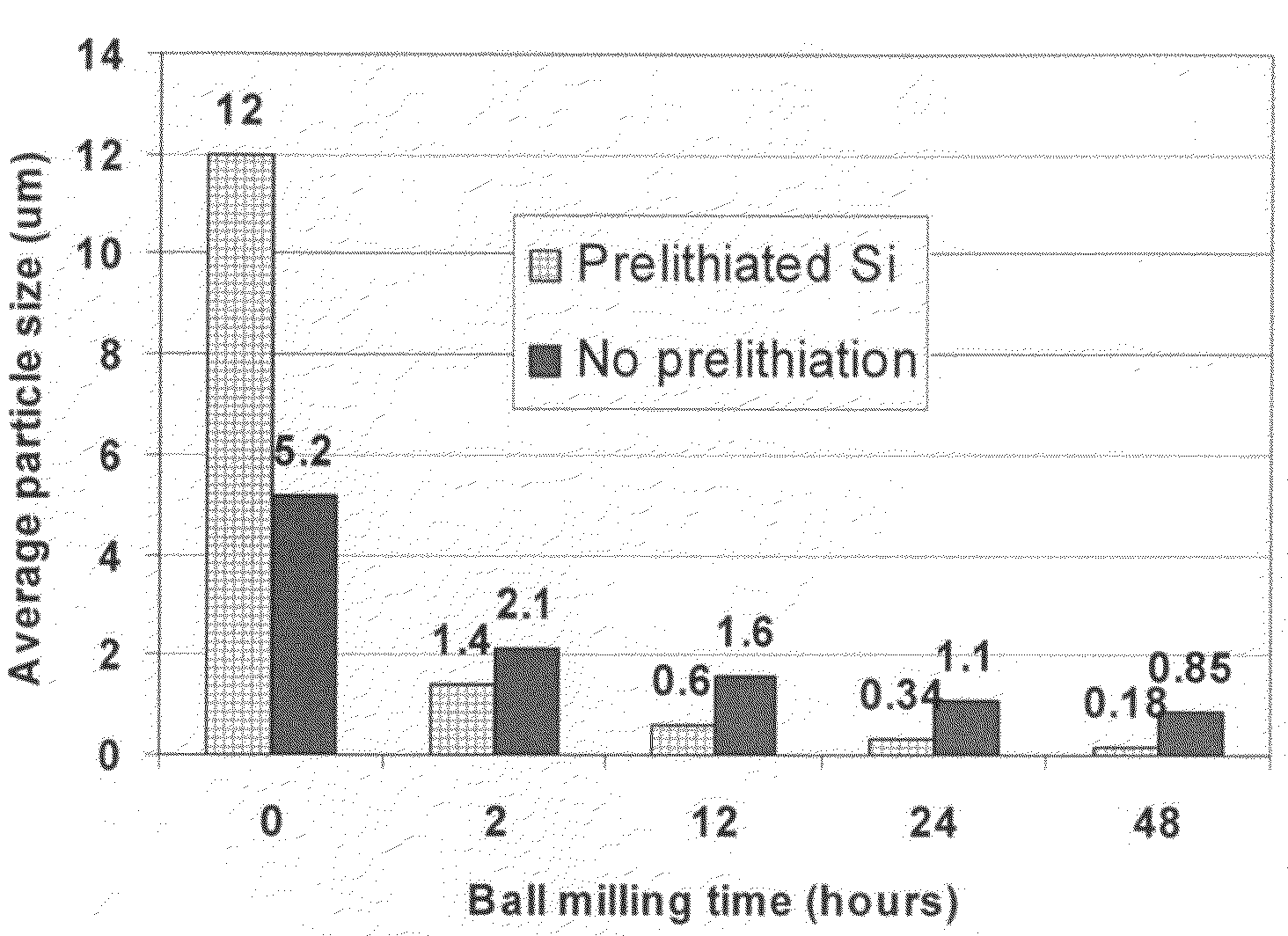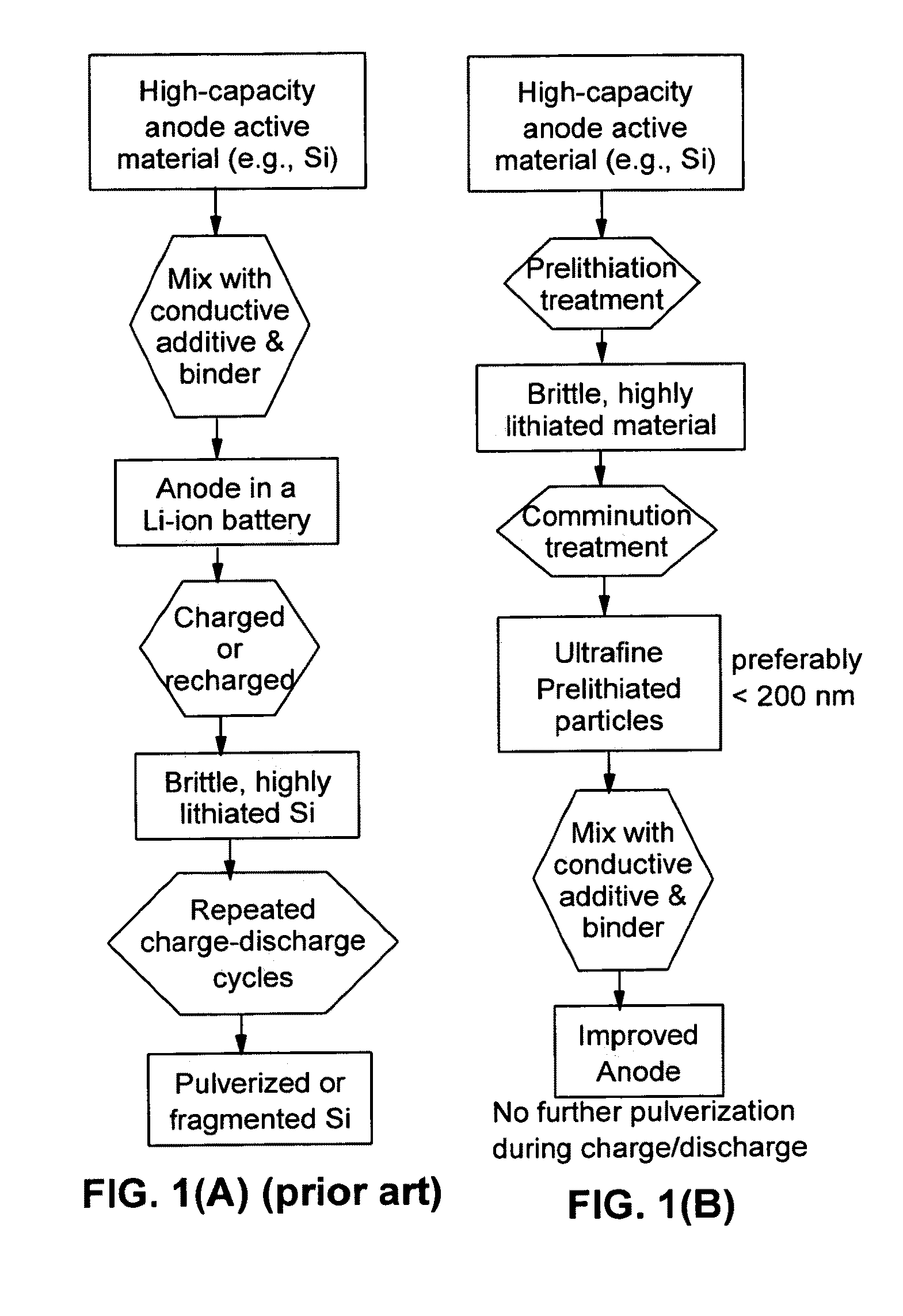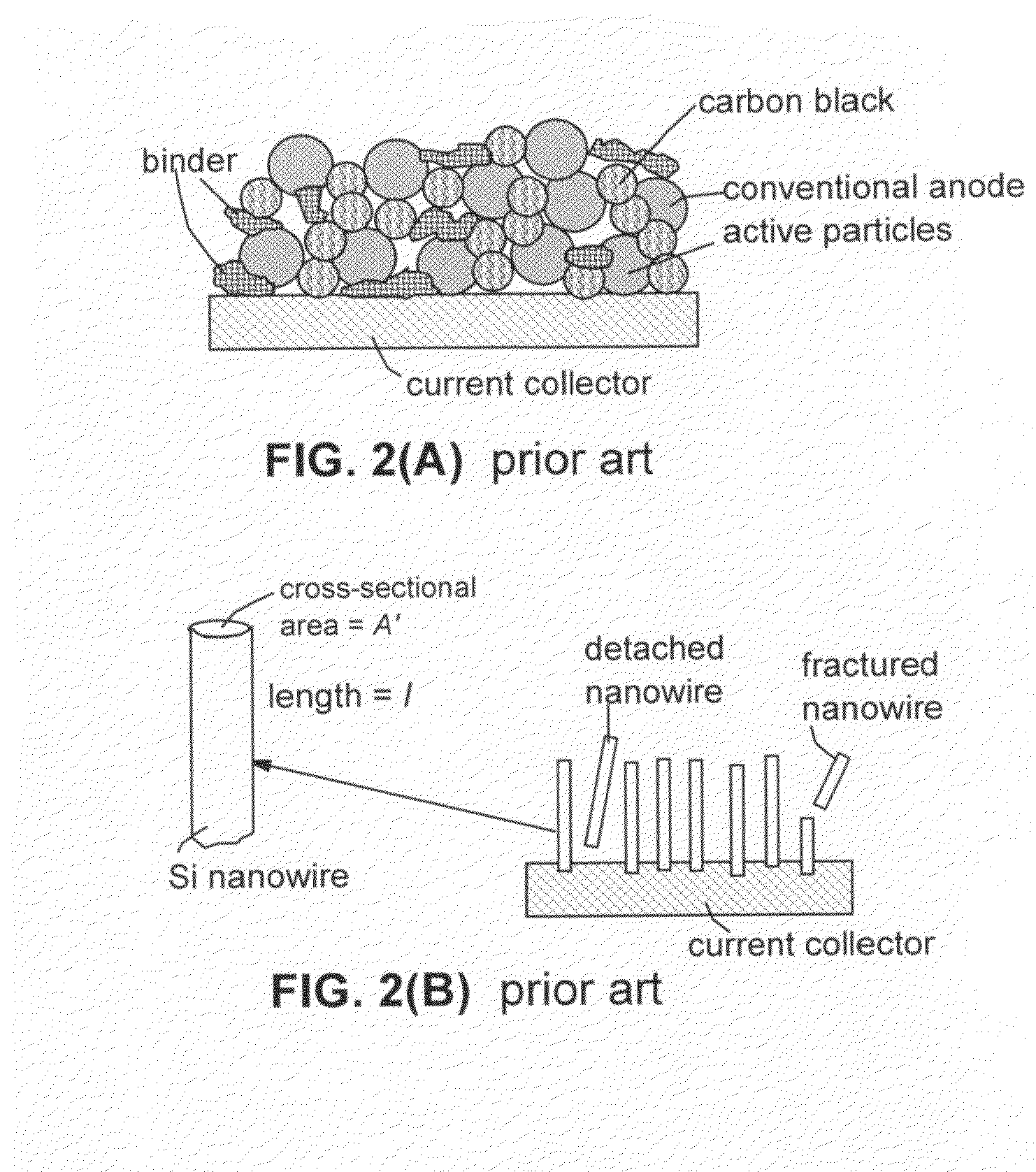Method of producing prelithiated anodes for secondary lithium ion batteries
a lithium ion battery and secondary battery technology, applied in the manufacture of electrodes, cell components, papermaking, etc., can solve the problems of fragments not being active in providing electrons to the external circuit, fragments losing contact with the conductive additive, and high dilated particles or thin films are extremely brittle and prone to pulverization or fragmentation, etc., to achieve the effect of improving specific capacity and prolonging the charge-discharge cycle li
- Summary
- Abstract
- Description
- Claims
- Application Information
AI Technical Summary
Benefits of technology
Problems solved by technology
Method used
Image
Examples
Embodiment Construction
[0071]This invention is related to anode materials for high-capacity lithium batteries, which are preferably secondary batteries based on a non-aqueous electrolyte or a polymer gel electrolyte. The shape of a lithium metal or lithium ion battery can be cylindrical, square, button-like, etc. The present invention is not limited to any battery shape or configuration.
[0072]The present invention provides a method of producing an anode for a rechargeable lithium-ion battery that exhibits a significantly improved specific capacity and much longer charge-discharge cycle life. The method comprises (a) providing an anode active material (preferably in the form of fine powder or thin film); (b) intercalating or absorbing a desired amount of lithium into the anode active material to produce a prelithiated anode active material; (c) comminuting the prelithiated anode active material into fine particles with an average size less than 10 μm (preferably <1 μm and most preferably <200 nm); and (d) ...
PUM
| Property | Measurement | Unit |
|---|---|---|
| Length | aaaaa | aaaaa |
| Thickness | aaaaa | aaaaa |
| Thickness | aaaaa | aaaaa |
Abstract
Description
Claims
Application Information
 Login to View More
Login to View More - R&D
- Intellectual Property
- Life Sciences
- Materials
- Tech Scout
- Unparalleled Data Quality
- Higher Quality Content
- 60% Fewer Hallucinations
Browse by: Latest US Patents, China's latest patents, Technical Efficacy Thesaurus, Application Domain, Technology Topic, Popular Technical Reports.
© 2025 PatSnap. All rights reserved.Legal|Privacy policy|Modern Slavery Act Transparency Statement|Sitemap|About US| Contact US: help@patsnap.com



